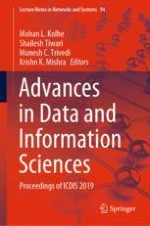This book gathers a collection of high-quality peer-reviewed research papers presented at the 2nd International Conference on Data and Information Sciences (ICDIS 2019), held at Raja Balwant Singh Engineering Technical Campus, Agra, India, on March 29–30, 2019. In chapters written by leading researchers, developers, and practitioner from academia and industry, it covers virtually all aspects of computational sciences and information security, including central topics like artificial intelligence, cloud computing, and big data. Highlighting the latest developments and technical solutions, it will show readers from the computer industry how to capitalize on key advances in next-generation computer and communication technology.
